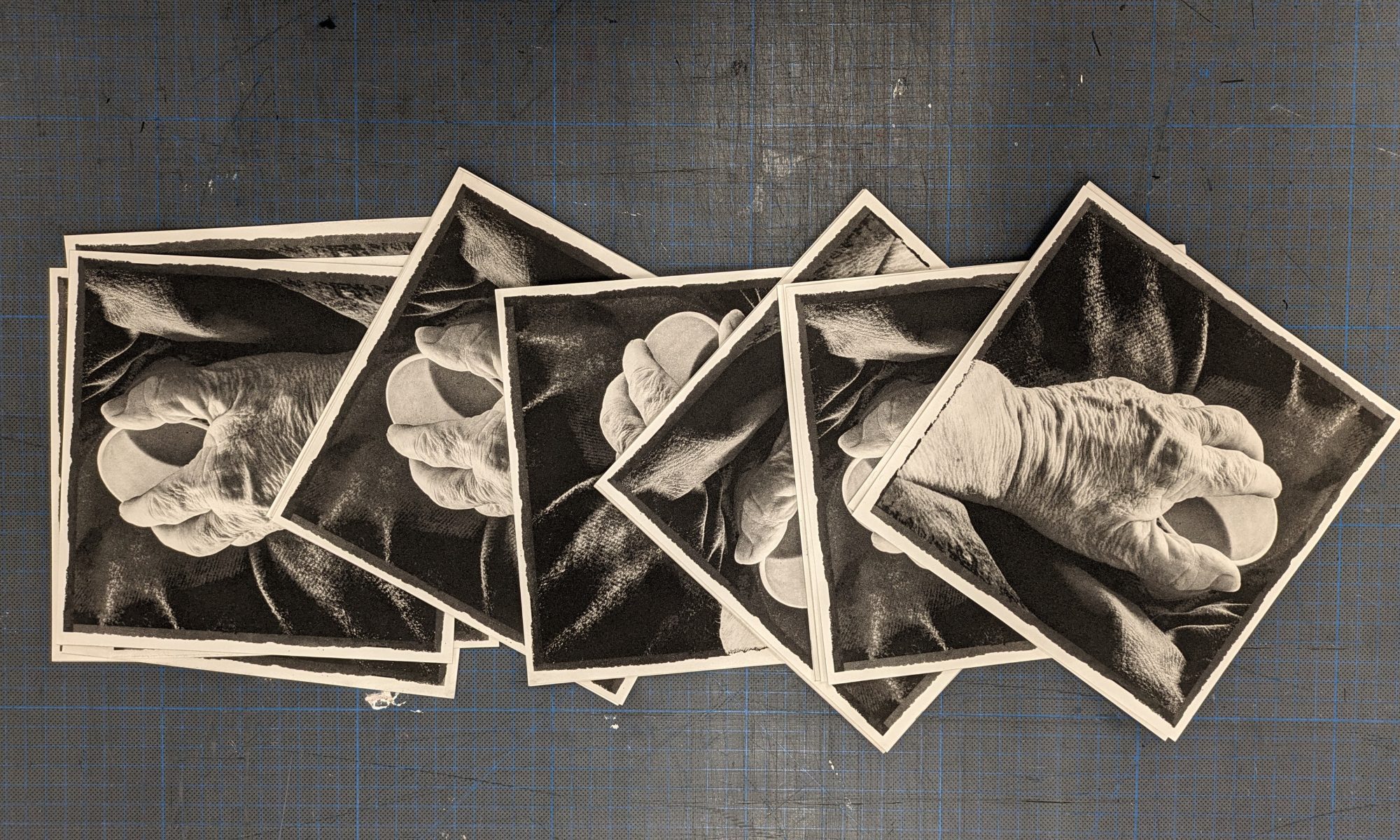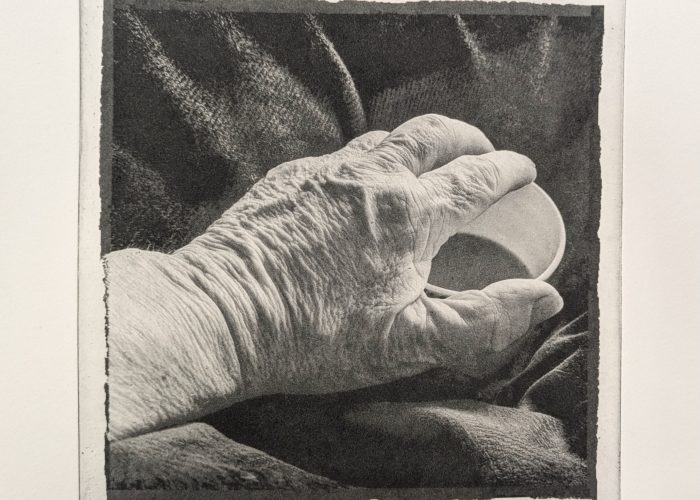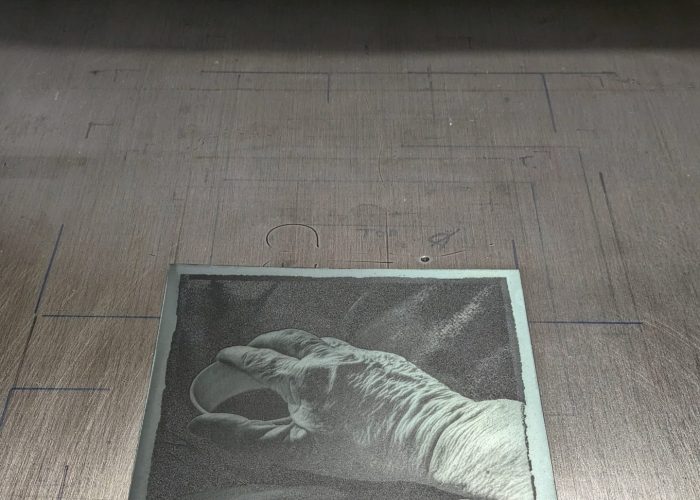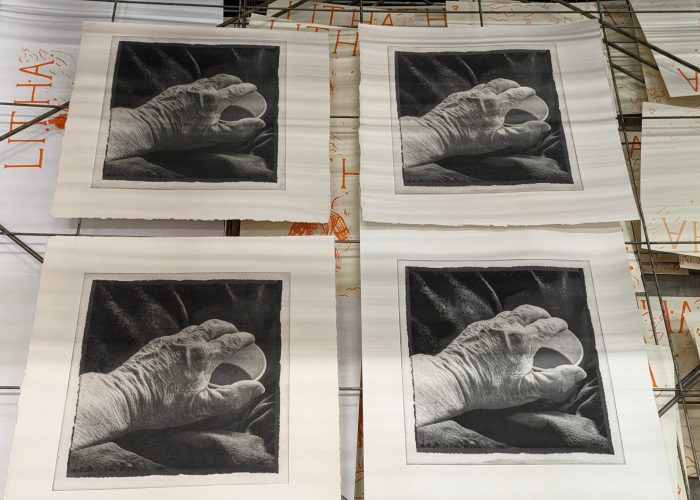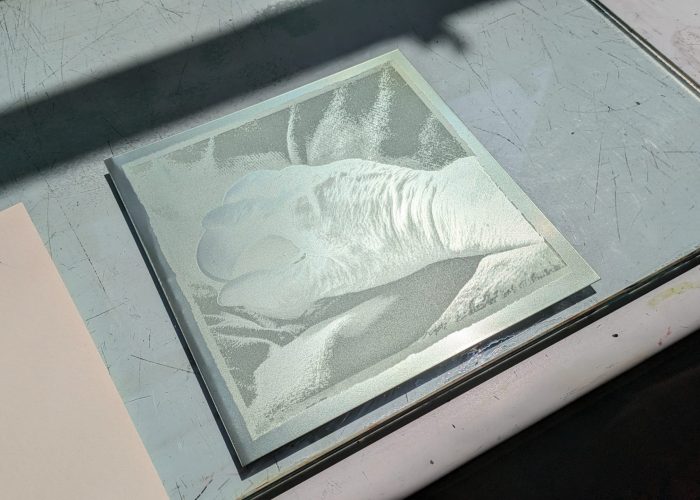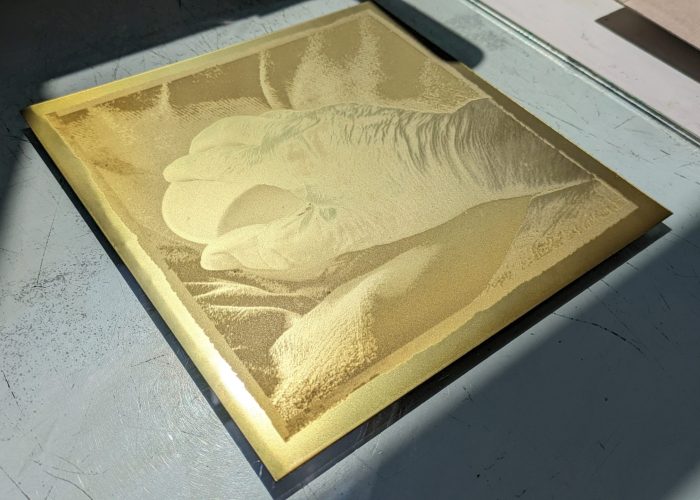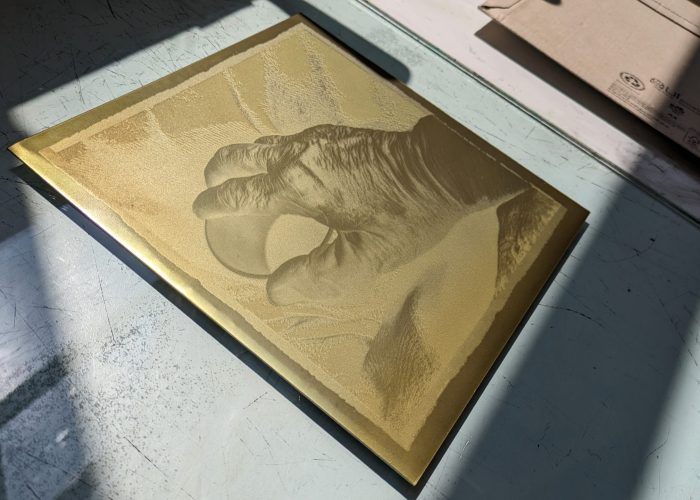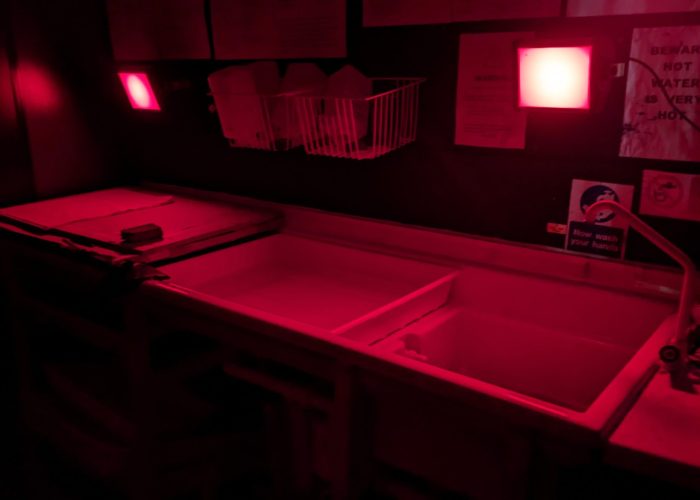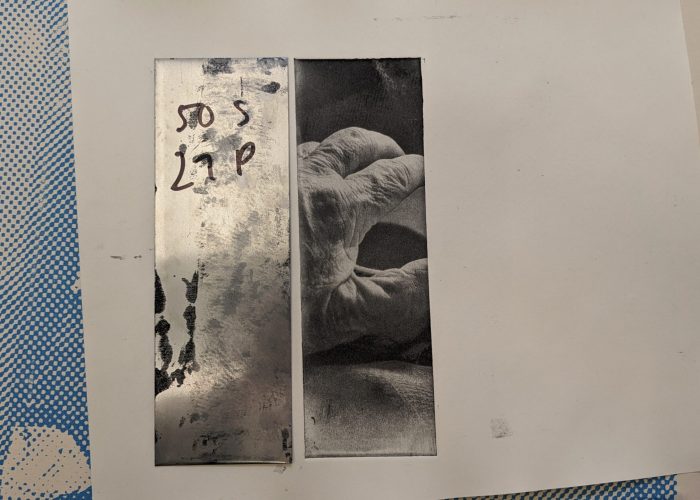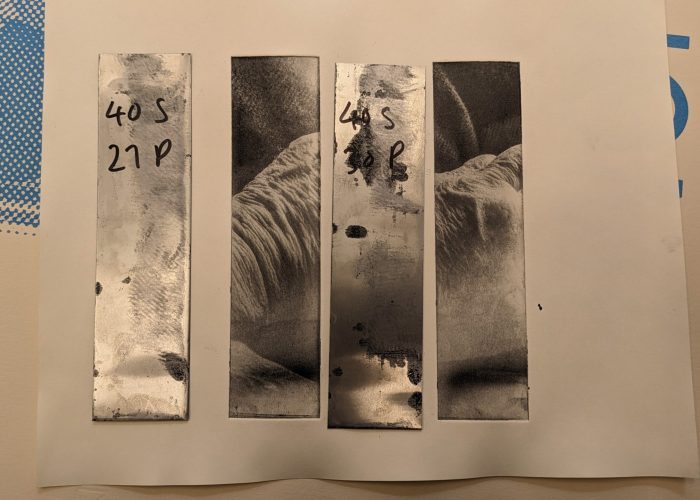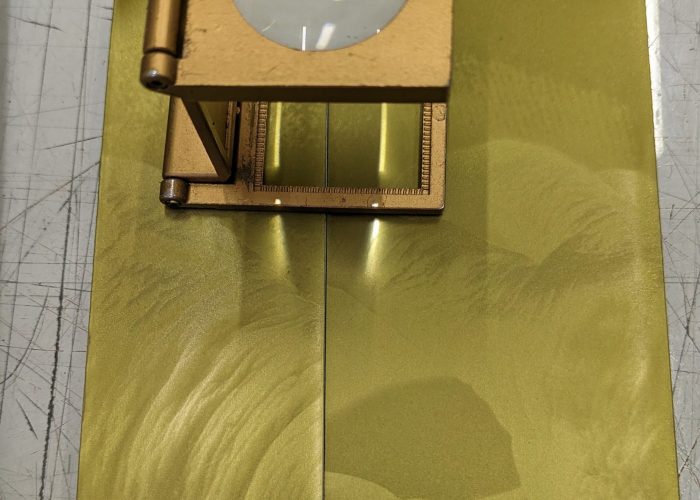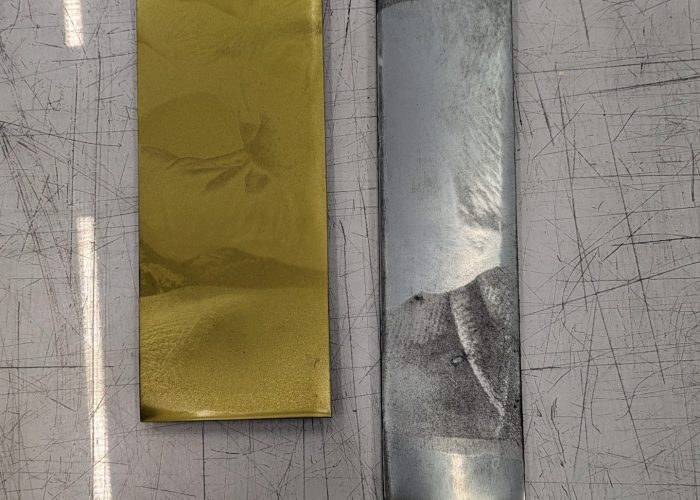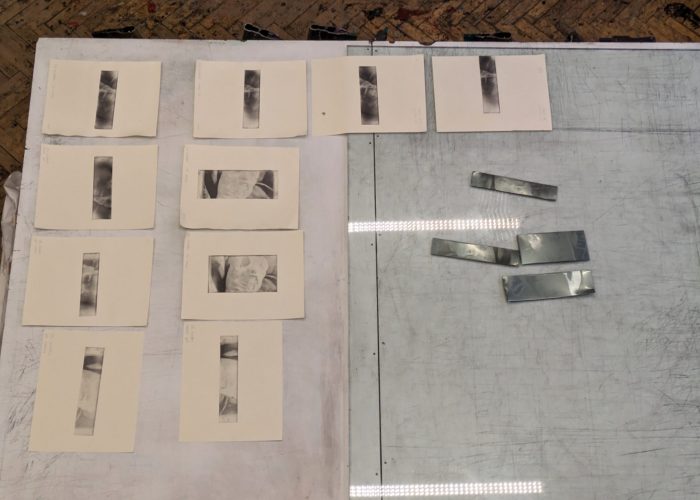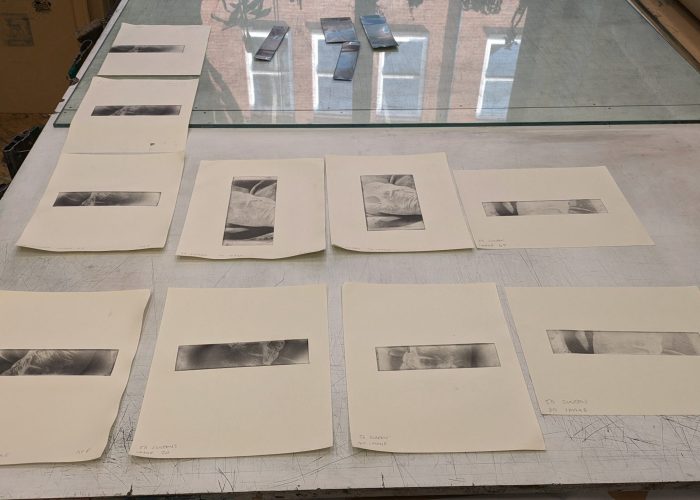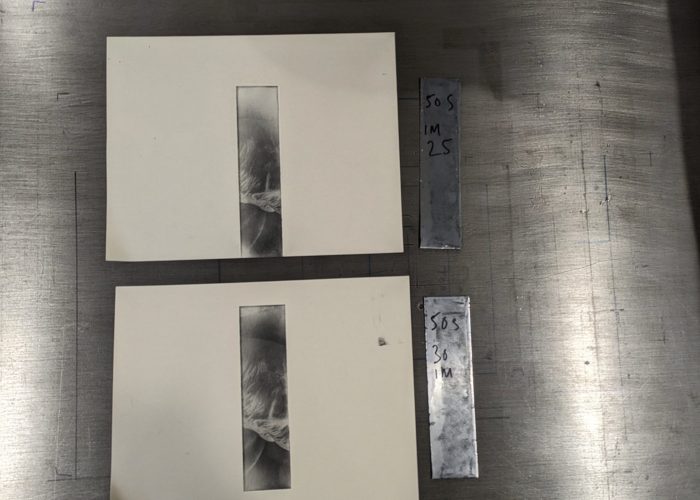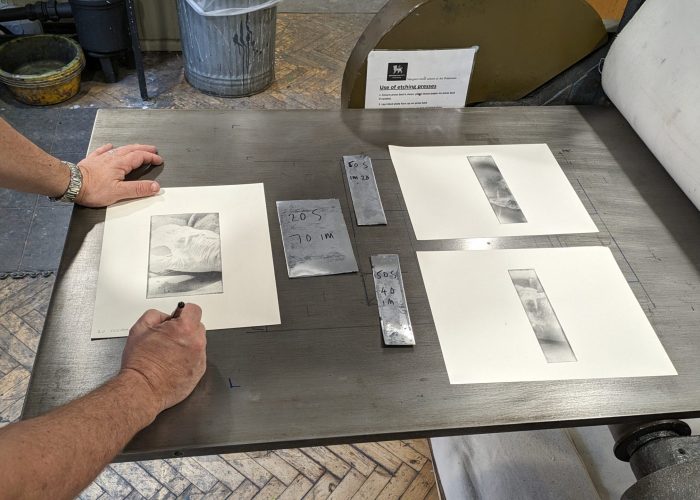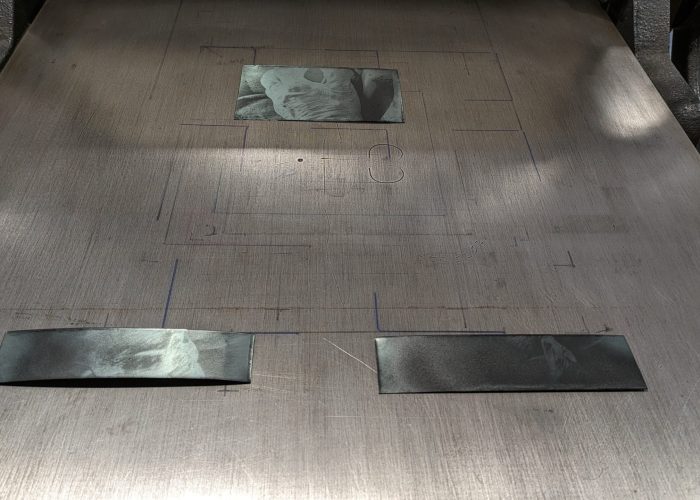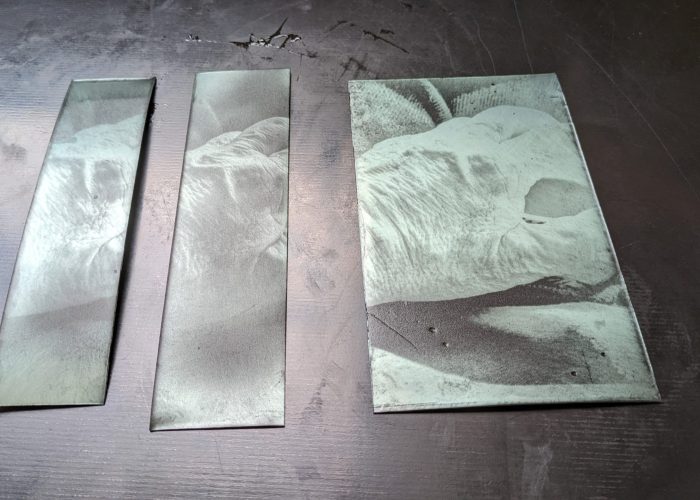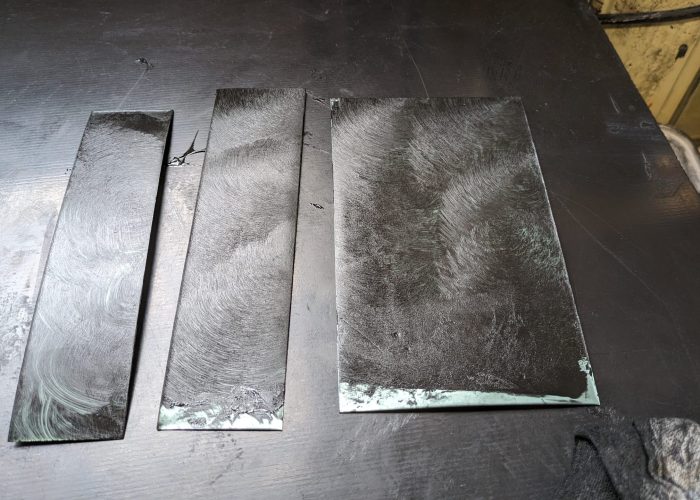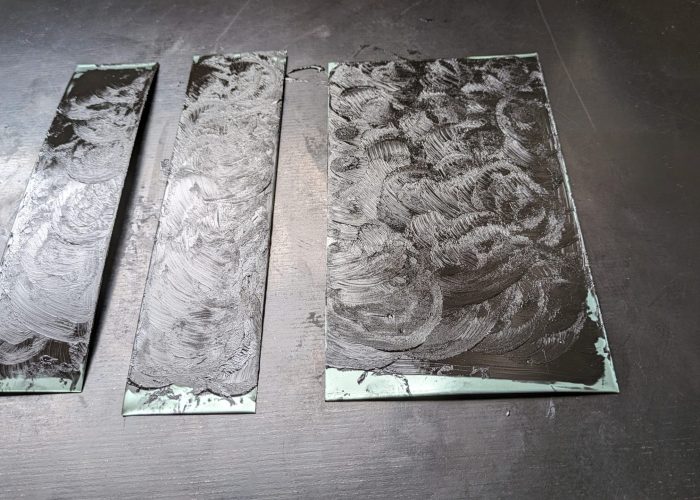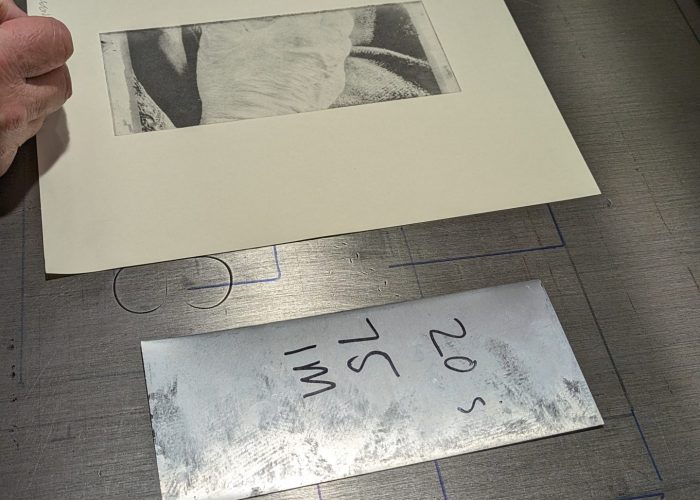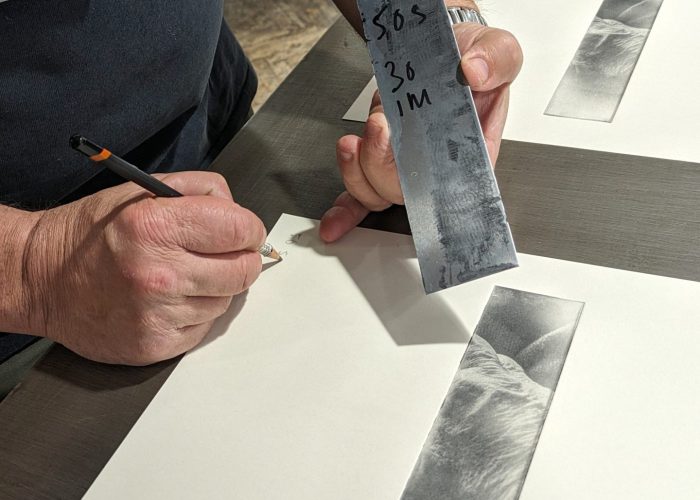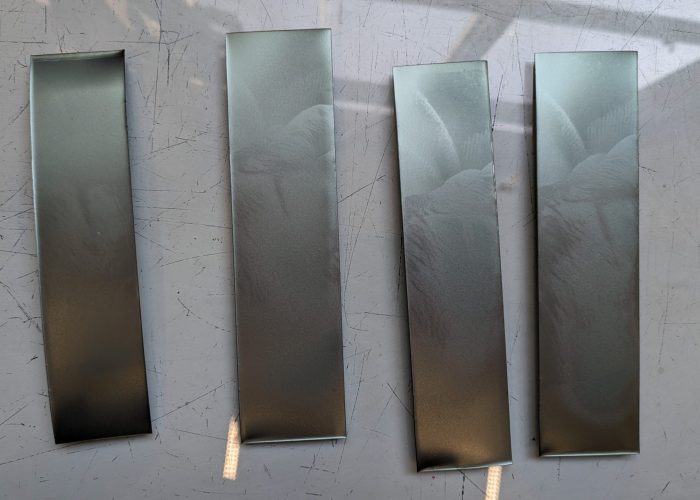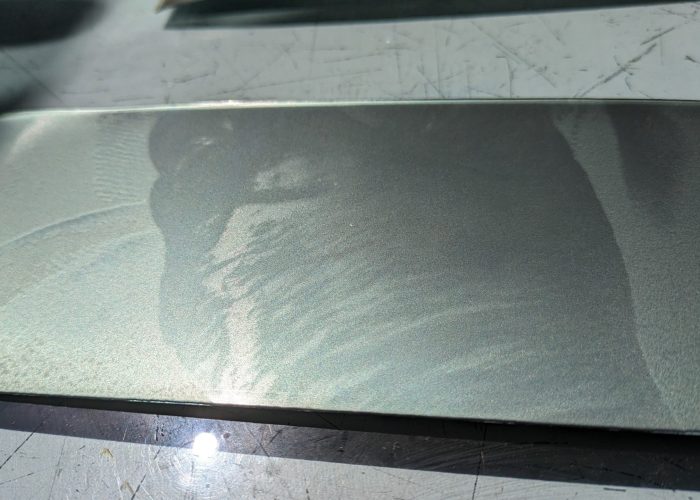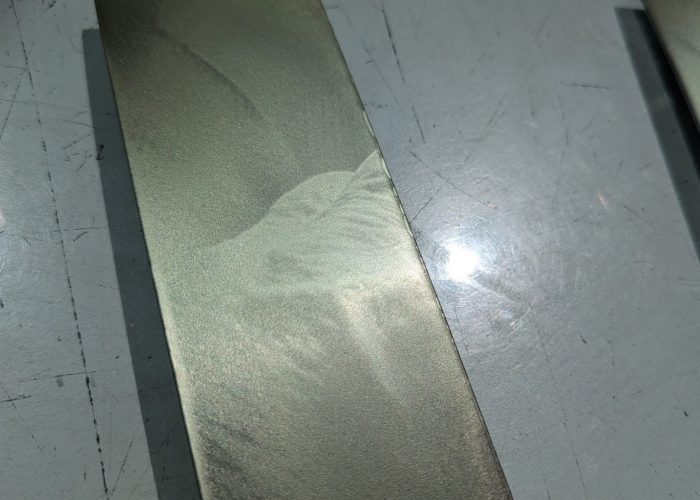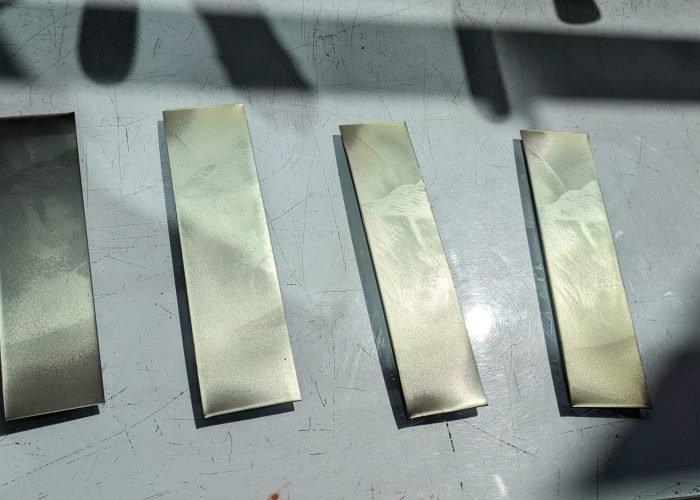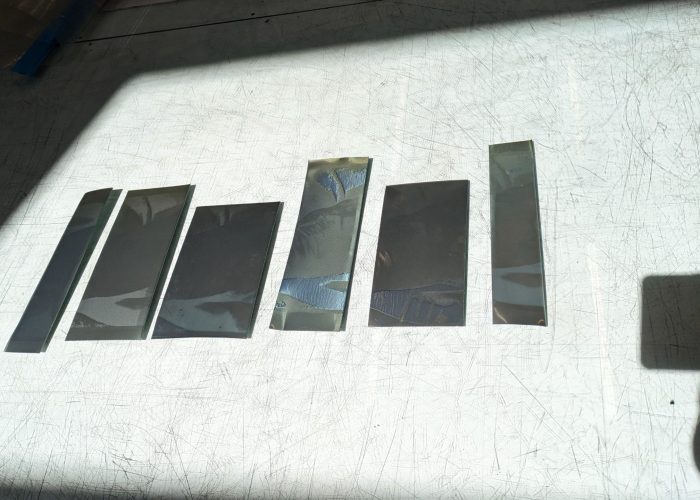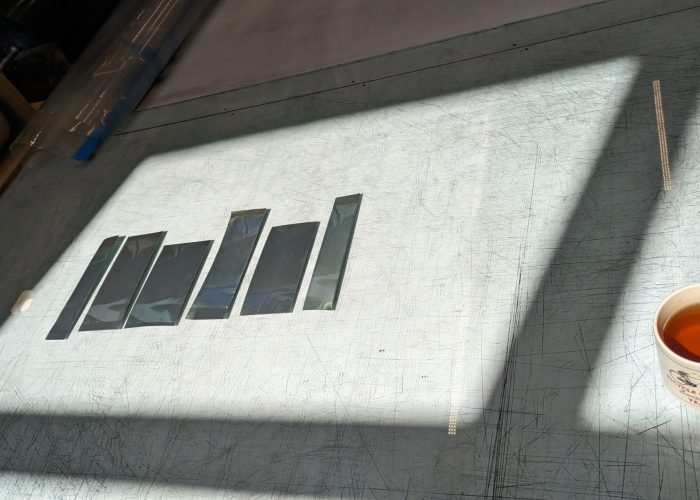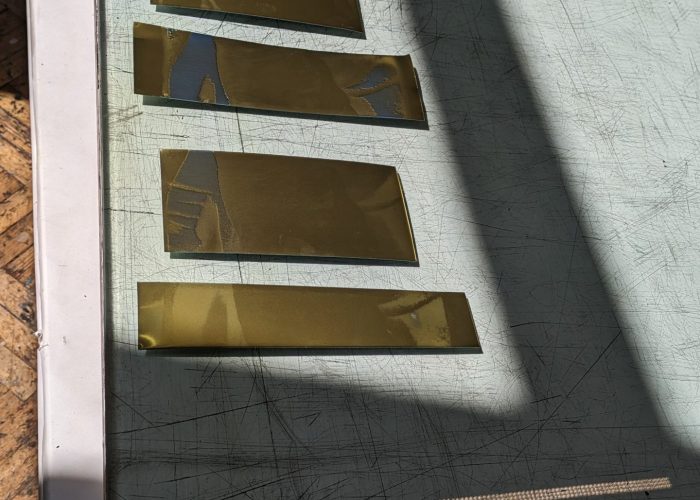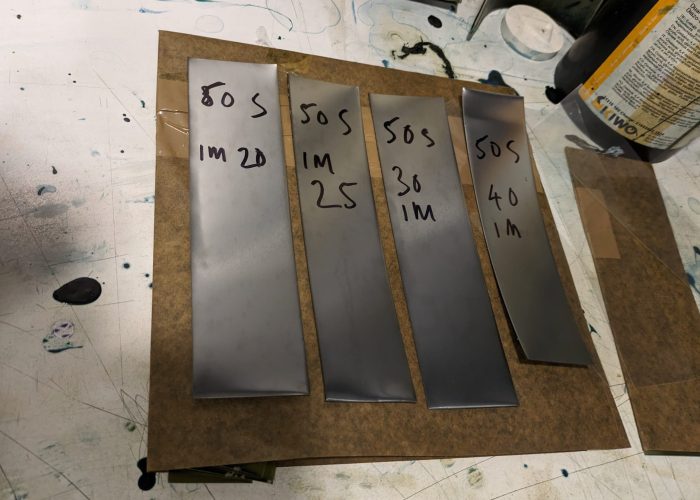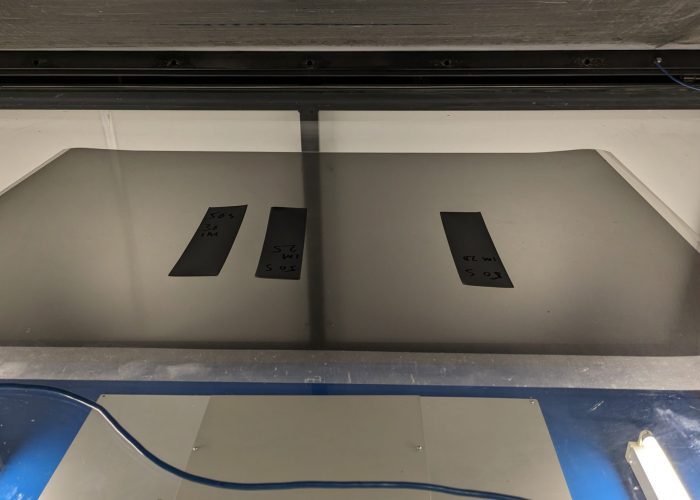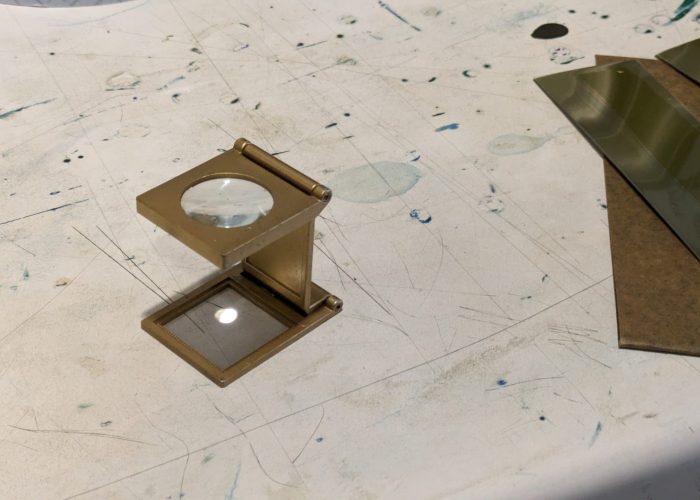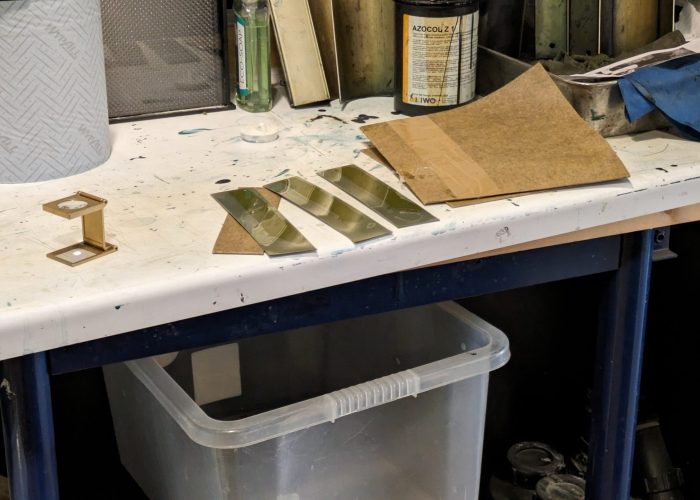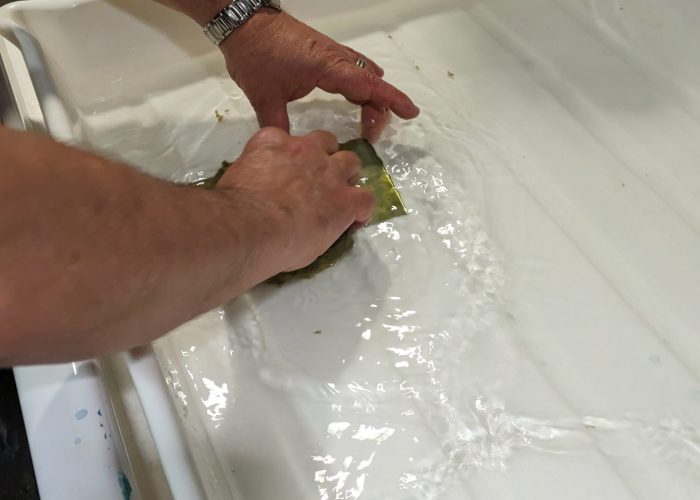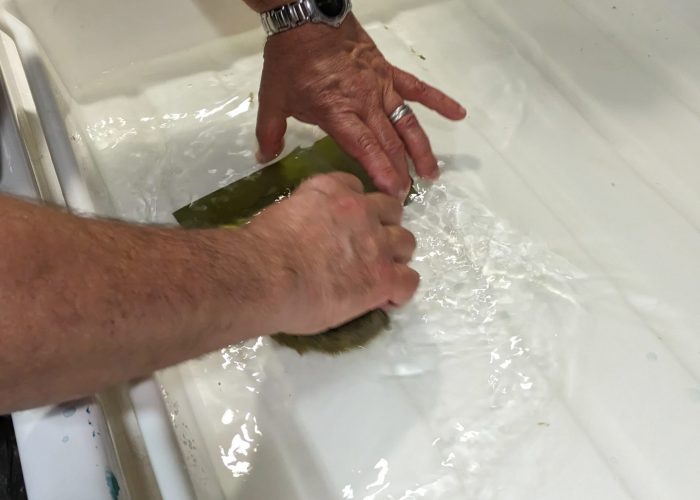.
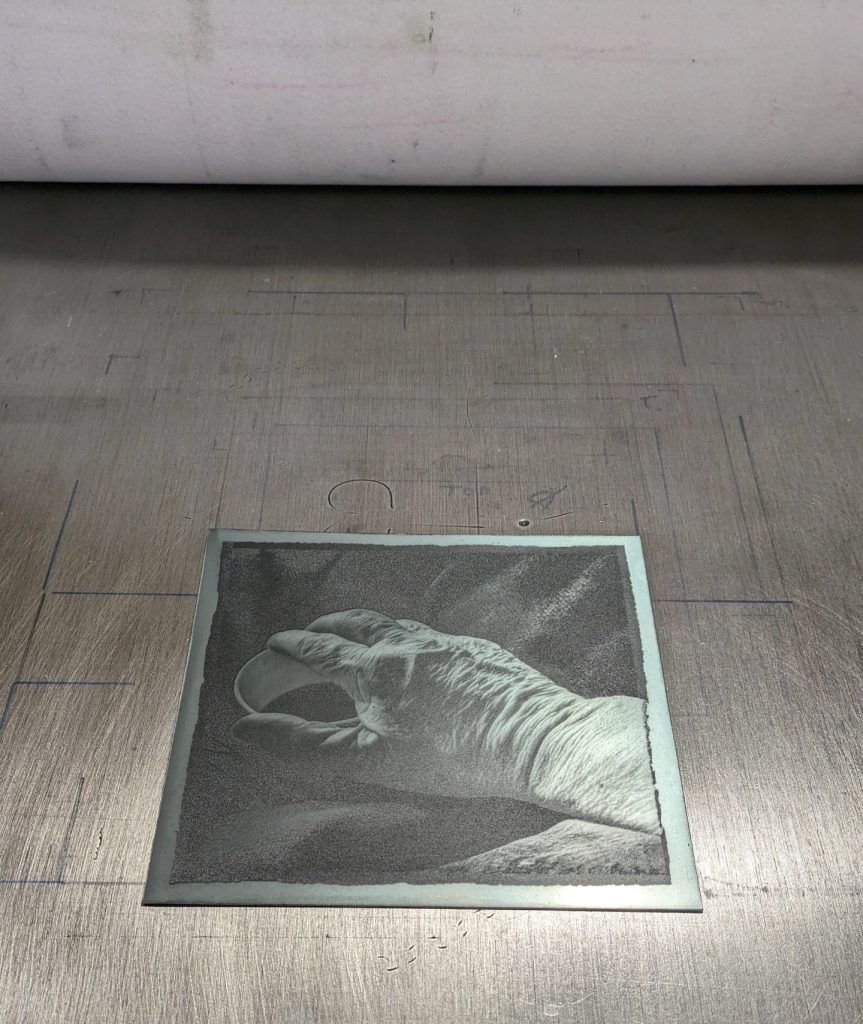
Polymer plate inked on the press bed awaiting the damp paper to be lain over it, ready to be wound through and transfer the ink to paper.
Half Empty? Half Full?
June 2023. 20x20cm
.
A slideshow of the Testing process using water and sunshine to develop and harden the polymer on the plate in preparation for inking up and winding through on the on pressure press to print out on paper.
This print was begun when I was waking up with a cup of tea in bed. The cup was smooth china, the tea half drunk, held by the dark maroon bedcover, in contrast to my hand that has become old and wrinkled in the last year since my CML diagnosis and in particular since the treatment with the daily drug Bosutinib. My skin in general has become wrinkled and pock marked with rashes and itches. I tried to capture my observation by taking a number of photographs with my smartphone. Getting contrast between hand, cup and bedcover took a number of attempts. One was effective which I printed on photographic paper.
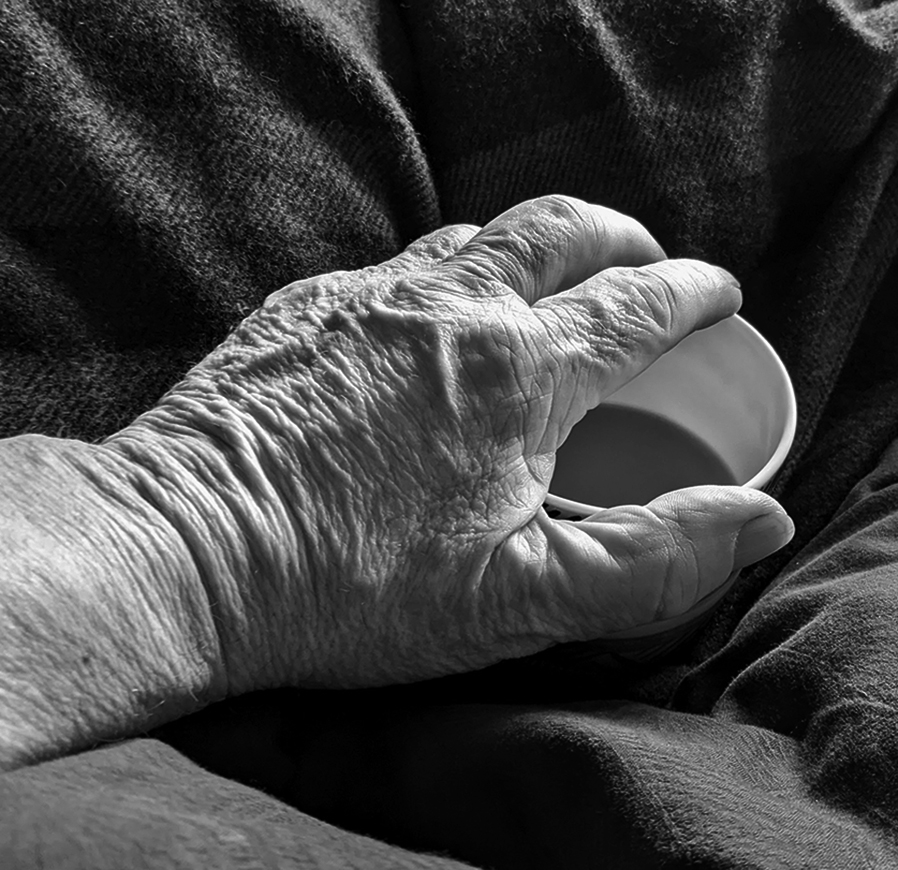
Half Empty. Photograph.
It was effective in its reflection of the contrast and some of the underlying intentions. However It seemed too sharp and ‘photographic’. Perhaps a softer printed version might encourage a reading of the question behind the scene: the hand was owned by a person questioning their mortality.
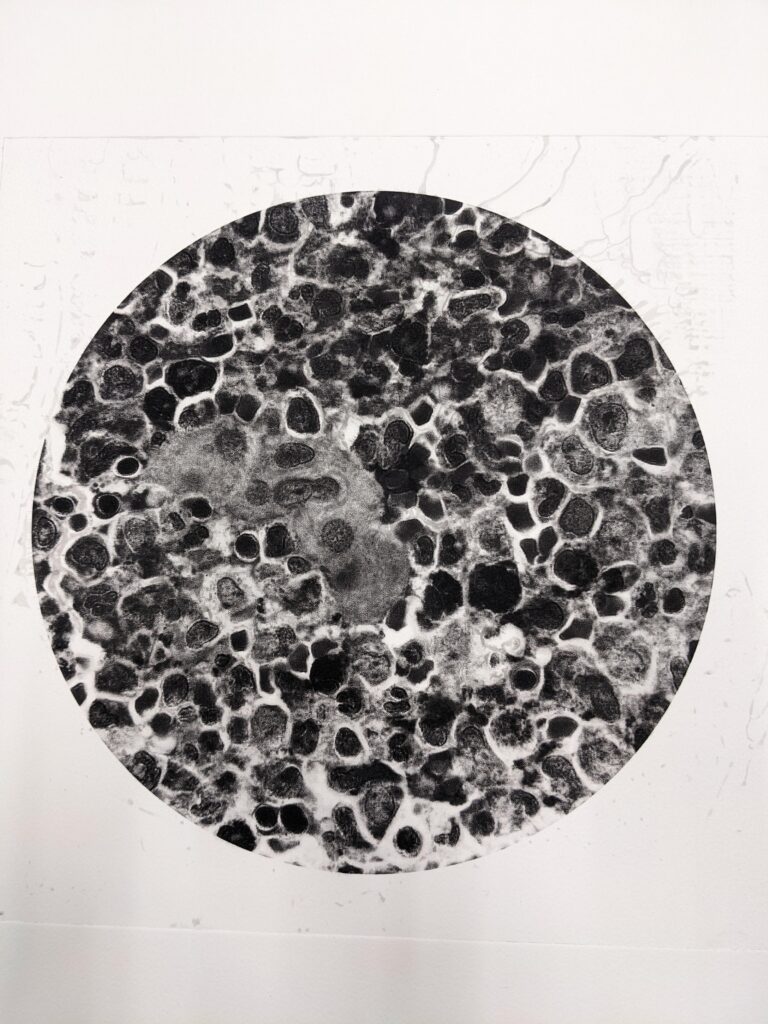
I had made a photogravure print from my bone marrow cells last year and perhaps a print using this hybrid technique would work.
I made film positive of the hand photograph to expose in the direct to plate method I had used. Unfortunately the large epson digital printer that had been successfully tested to take the very thin metal sheet coated with a light sensitive polymer, was out of commission. I consulted with master printmaker Justin Sanders whether a photo gravure print could be applied to the image. He thought it possible, but it maybe too contrasty. As we could not use the direct to plate method at the moment the only way forward would be to make some manual tests to establish an exposure that would provide the breadth of tone. The direct to plate methods had required testing to provide a predictable and stable exposure. Now we would have to test the positive image and the random aquatint screen that together generate the detailed polymer exposure.
I printed a second positive image on to transparent film to be exposed on to the polymer plate. Polymer Photogravure uses light-sensitive, very thin steel backed, polymer plates to create a photographic image that is inked and printed using traditional etching techniques. It can give a fine detail with a wide tonal range. We tried a number of tests with the acquatint ( stochastic) screen and positive exposures. The process of stochastic screening differs from conventional halftone screening, namely in the position and amount of random dots in each image. According to supplier Rittagraf :
Stochastic screening for photopolymer plates. Also called aquatint screen, it is an indispensable tool in photogravure for converting continuous-tone images to discontinuous-tone images.
Without the use of a stochastic screen, our photopolymers would be excessively contrasted, open bites would appear in the darkest areas, and gray gradients would be lost.
After an exposure test and print out we were unhappy with the lack of depth in the blacks, and few whites in the highlights we went back to the developing room and tried varying the exposures on the positive with a 30 light unit exposure on the screen. This did not seem to change the image radically. Justin had a radical idea: up the screen exposure and decrease the positive.
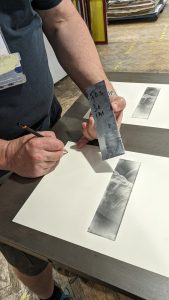
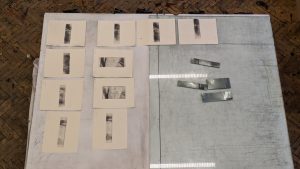
Test plates and print outs
The result was surprisingly good with a much better breadth of tone and deeper blacks. We applied more plate test strips and print outs: 30:25/ 30: 27 /30:30 and eventually 35:27. This test plate looked to be rather good and we went straight to a full size 20x20cm plate. Once developed in the water tray for 3minutes the soft yellowy polymer was laid in the bright sunshine to harden the polymer. As the UV rays hardened the polymer to a silvery grey, ready to take the ink. Four proofs were made.
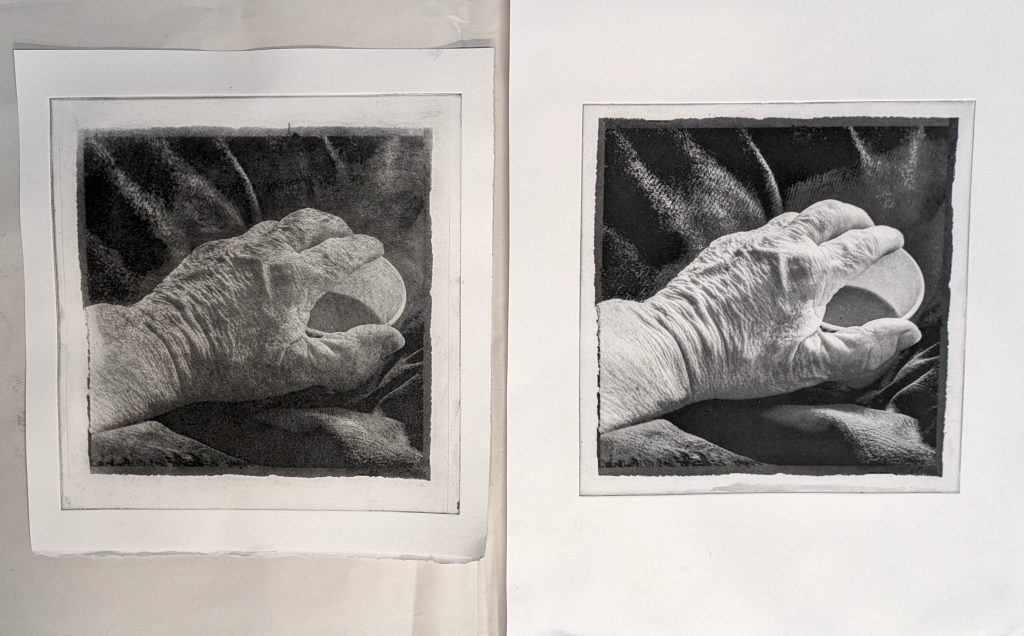
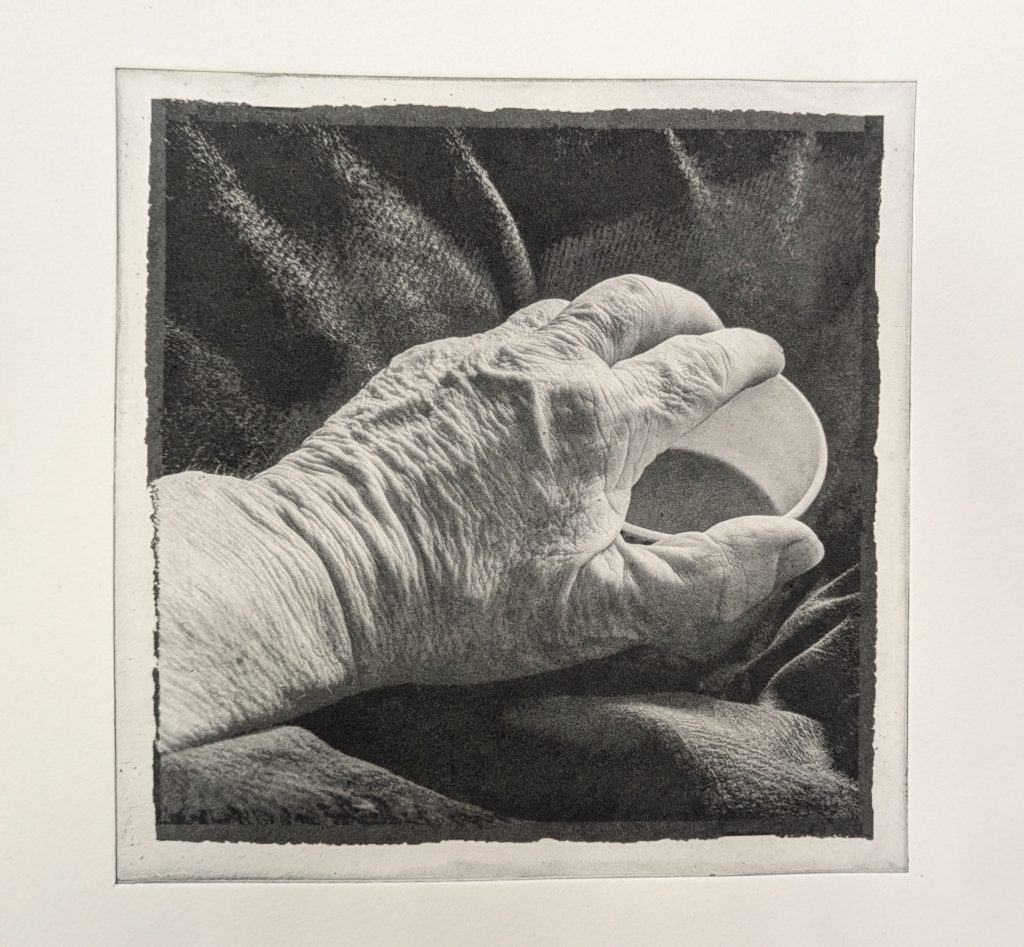
Artist’s Proof. Half Empty June 2023
The efforts to make the photogravure print as opposed to the photographic image has been valuable. Both have their qualities, and the photograph may be more dramatic on this electronic screen, however the print is more of an interpretation of the observation rather than a sharp document. I have also included an irregular torn border and a secondary flat tone internal border that indicate a hand made, rather than photographic print. 25 prints will be made and despatched to HotBed Press for the 2023 Exchange Exhibition. Although we have successfully carried out a tested balanced exposure between image and screen, I look forward to the time when we can get the digital direct to plate system back up and running.
Making the edition
30 sheets of Fabriano Tiepolo were cut to 23x23cm. 12 were soaked in the water bath in preparation for printing. The plate was fished out of the drawer it had been keep safe from scratches in and inked with soft velvet black.

Hand upon hand 12 prints were inked and rolled through the press and laid on the drying racks. Another 13 will be printed tomorrow. The paper squares are taken from the water and placed between plastic sheets to retain their soft soaking overnight in preparation for printing tomorrow.
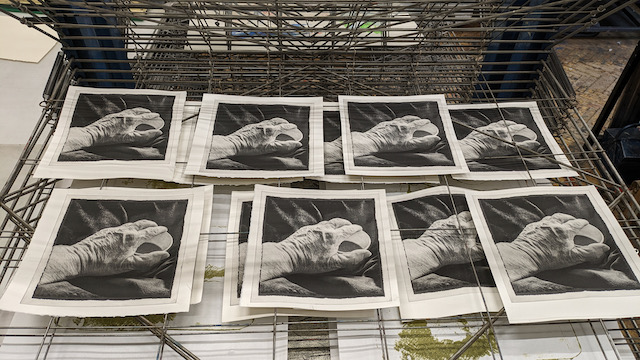
Finally a separate print is prepared. An A3 piece of Zerkall German Etch paper is placed in the bath. Zerkall ismould made, acid free, neutral sized, alkaline buffered with calcium carbonate. At 350 gsm it is very thick. French Charbonnel ink is carefully eeked out of the metal can leaving a flat surface to be covered with tracing paper, preventing the air reaching the unused ink to ensure it does not dry out.
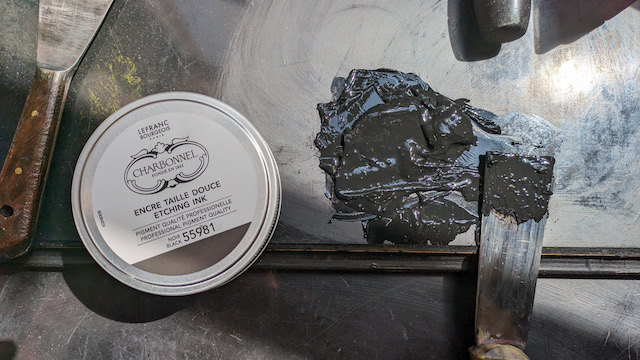
Zerkall has been chosen as it provides a surface that holds the details ad tones of a plates as it is pressed into the inked surfaces. Once dried it is thick, stable, and displays the breadth of tones across this print. The wide border gives space for the half full/empty print to live.
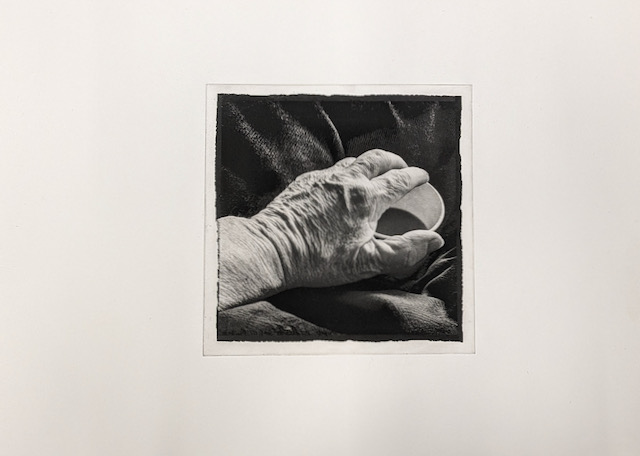
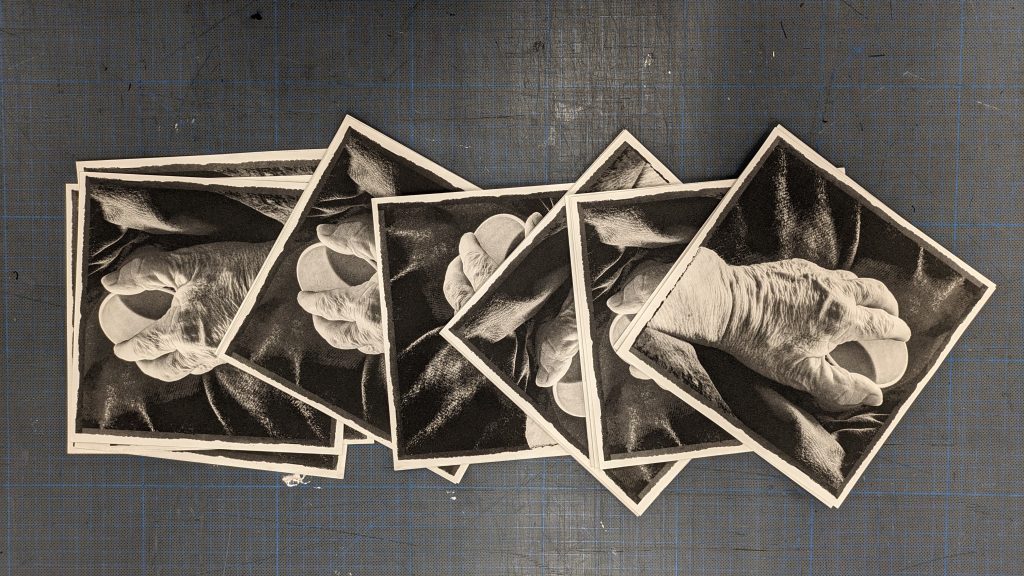
25 editioned 20by20 photo gravure prints on Tiepolo paper numbered, titled and signed for despatch to Hot Bed Press in Manchester for the curation of a touring exhibition. (https://www.2020printexchange.com/howitworks) The first edition of each submitted prints retained for the opening exhibition and tour. The additional 24 are shared with 24 submitting artists in a dedicated 20:20 print box. A positive print exchange.
How Do Photopolymer Printing Plates Work?
The process of creating photopolymer printing plates involves several steps. First, a digital file is created with the desired artwork or design. Then, using specialized software and equipment, the digital file is transferred onto a transparent film or directly onto the plate itself using a computer-to-plate (CTP) system.
Once the image is transferred onto the plate, it undergoes exposure to UV light. The areas exposed to UV light become hardened while the unexposed areas remain soft and soluble. After exposure, the plate goes through a washout process where the unexposed areas are dissolved away using water or solvent-based solutions.
The resulting plate consists of raised relief areas that correspond to the desired image or design. These raised areas hold ink during the printing process while transferring it onto the substrate. [www.Reference.com]
direct-to-plate
We at the Birmingham School of Art have been testing direct t-to-plate techniques that reduce the photo chemical elements of the process by digitally printing the artwork image on to a polymer coated plate, which is then exposed to UV light and level;oped.etched with water, before being washed out, dried and cured in sunshine for 24 hours.
https://www.sciencedirect.com/topics/materials-science/photoresponsive-polymer
Photoresponsive polymer
Toyobo Printight Solar Plate KM73 (photopolymer plates) available from a variety of suppliers including Intaglio: https://intaglioprintmaker.com/product/toyobo-printight-solar-plate-km73/. and https://www.jacksonsart.com/search/?q=photo+polymer
The Toyobo Printight Solar Plates consist of environmentally sound photopolymer film that sits on a plate. The photopolymer is a photosensitive material that can be exposed to UV light through a negative film. The light shines through the film to harden the polymer and the excess is washed away. This process contains no chemicals. The KM73 photopolymer is 0.73mm thick and on a steel plate.
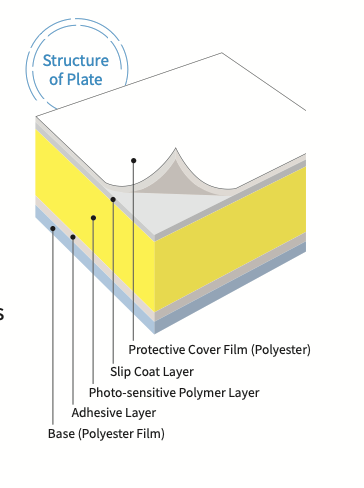
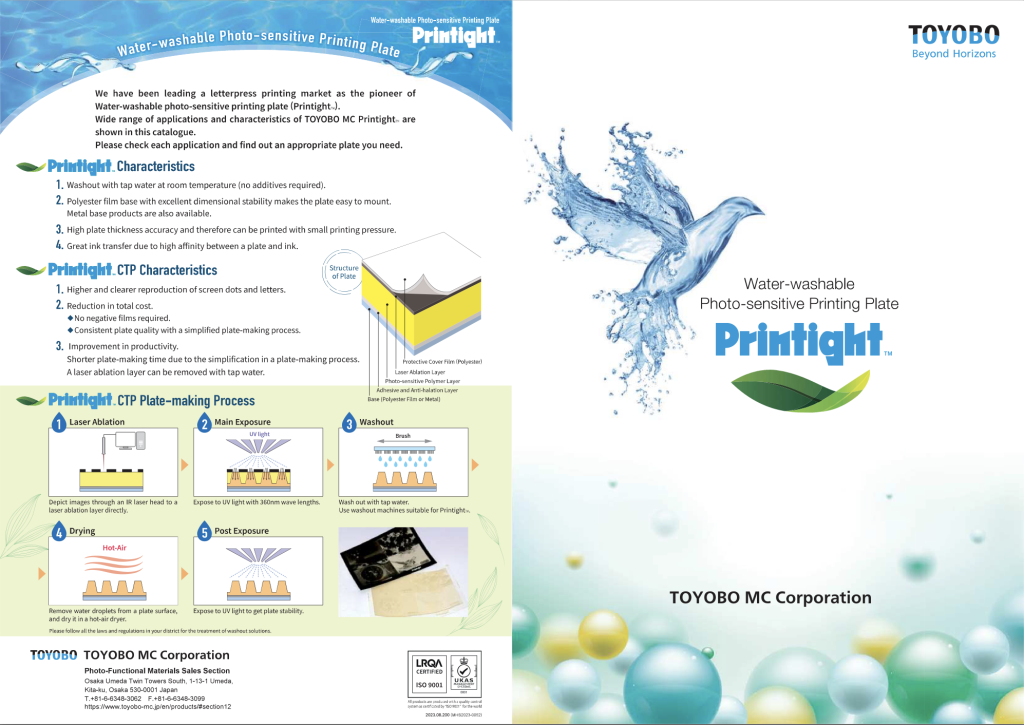
The polymer is a complex composition of chemicals developed for the printing industry inc 3d printing for a range of industries including dental health.


